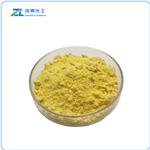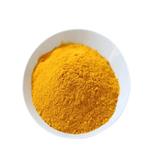Chemical Properties
yellow powder
Uses
It is used in cosmetic composition for application to the skin, lips, and/or body surface. Dyes and metabolites, Environmental Testing.
Uses
In spirit lacquers, polystyrenes, polycarbonates, polyamides, and acrylic resins. In colored smokes. Occasionally in hydrocarbon solvents. In externally applied drugs and cosmetics.
Preparation
the dye: (a) 2-Methylquinoline?and Phthalic anhydride in 200 ℃ in the presence of Zinc chloride condensation; (b) 2-Methylquinoline?and Diethyl phthalate?in the 100 ℃ were hot. (c) 3 – (2 – quinolin – ylmethylidene) – 2 – benzo [c] furanone and Sodium ethoxide in 240 ~ 250 ℃ were hot. Late dye: 2-Methylquinoline?and 2,6-Dimethylquinoline?Phthalic anhydride mixture and in 190 ~ 220 ℃ were hot.
Definition
ChEBI: Quinoline yellow is a quinoline derivative with a 1,3-dioxoindan-2-yl substituent at C-2. It has a role as a dye. It is a member of quinolines, a beta-diketone and an aromatic ketone.
General Description
Bright greenish yellow solid or canary yellow powder.
Air & Water Reactions
Insoluble in water.
Fire Hazard
Flash point data for Solvent Yellow 33 are not available. Solvent Yellow 33 is probably combustible.
Flammability and Explosibility
Non flammable
Properties and Applications
brilliant green yellow. Insoluble in water, slightly soluble in alcohol (yellow), linseed oil, mineral oil, oleic acid, paraffin wax, stearic acid, turpentine, soluble in acetone, Chloroform, benzene and toluene. In concentrated sulfuric acid for yellow brown, dilution after yellow floc precipitation. Used for alcohol soluble paint, polyethylene, polycarbonate, polyamide and acrylic acid resin, color cosmetics.
|
Standard
|
Light Fastness
|
Heat-resistant(℃)
|
water
|
Sodium Carbonate(5%)
|
Hydrochloric acid(5%)
|
|
Melting point
|
Stable
|
|
ISO
|
General
|
160
|
180≥160
Sublimation
|
Insoluble
|
No change
|
No change
|




